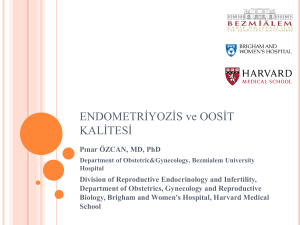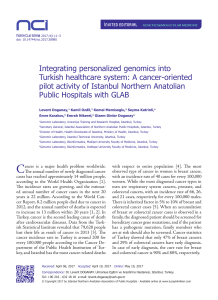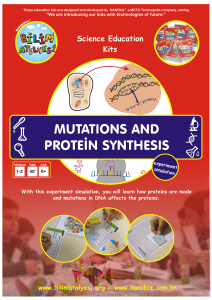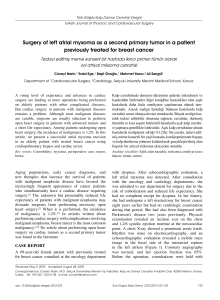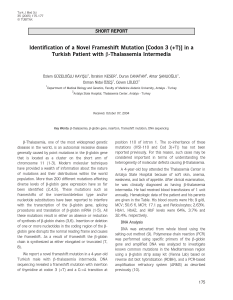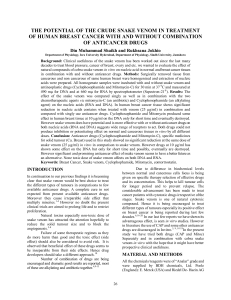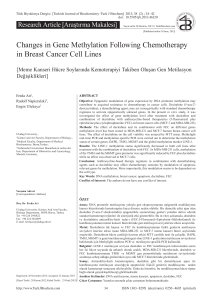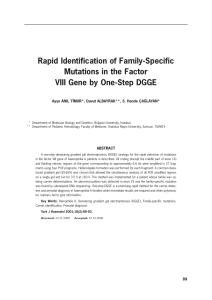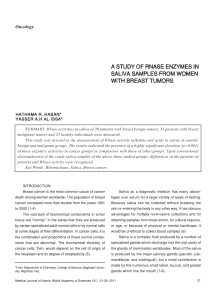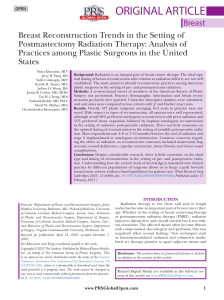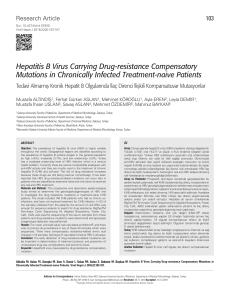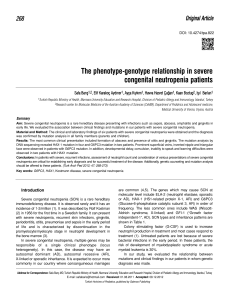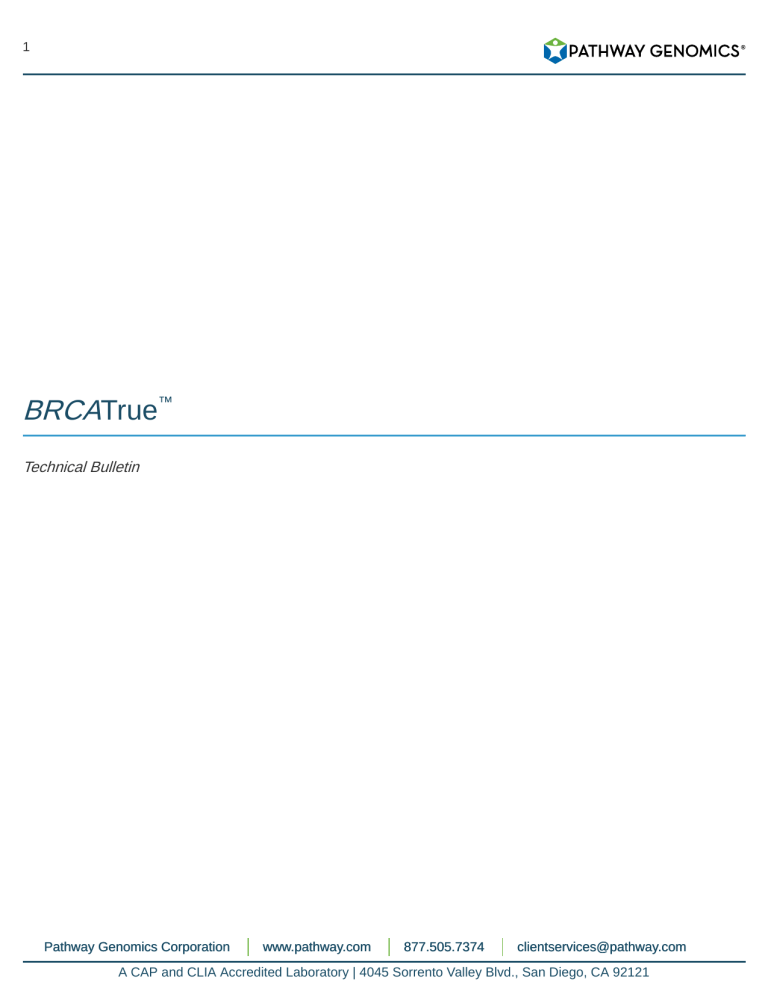
1
BRCATrue™
Technical Bulletin
Pathway Genomics Corporation
www
www.pathway
.pathway.com
.com
877.505.7374
clientservices@pathway
[email protected]
.com
A CAP and CLIA Accredited Laboratory | 4045 Sorrento Valley Blvd., San Diego, CA 92121
2
Hereditary Breast and Ovarian Cancer (HBOC)
Syndrome
1. Breast and Ovarian Cancer
Breast cancer is defined as a malignant tumor in the breast caused by uncontrolled division of abnormal cells. The disease
occurs in men and in women, though male breast cancer is rare. Women in the general population have a 12.3% lifetime
risk of breast cancer; that is about 1 in 8 women will develop the disease.1 In contrast, men have a lifetime risk of 0.13%, or
about 1 in 1000.1 The most common type of breast cancer is ductal carcinoma, occurring in about 7 of 10 women with the
disease.2 Approximately 1 in 10 women with breast cancer has lobular cancer.2 A mixture between ductal and lobular, and
other less common types account for the remainder of breast cancer cases.2
Ovarian cancer is a malignancy in the ovaries caused by uncontrolled division of abnormal cells. The lifetime risk of
developing ovarian cancer is 1.4%, or about 1 in 72.1 The most common types of ovarian cancer are ovarian epithelial
carcinoma and malignant germ cell tumors.3
2. HBOC Syndrome
Increased incidence of breast and ovarian cancer is observed among women with a family history of the disease. 4 Studies
have demonstrated that highly penetrant genetic variations in a small number of genes are responsible for the increased
risk of breast and ovarian cancer in families.1 In the early 1990s, BRCA1 and BRCA2 were identified as the two,
predominant genes harboring these highly penetrant mutations (Table 1). Mutations in either BRCA1 or BRCA2 result in an
up to 85% life-time risk of breast and ovarian cancer in high-risk families.5,6,7 Cases of familial breast and ovarian cancer
not related to BRCA1 or BRCA2 are thought to be caused by other genes, each one accounting for a small fraction of the
total.8 Some of these additional susceptibility genes include, ATM, CDH1, CHEK2, MLH1, MSH2, MSH6, PTEN, STK11,
and TP53.7
Pathway Genomics Corporation
www
www.pathway
.pathway.com
.com
877.505.7374
clientservices@pathway
[email protected]
.com
A CAP and CLIA Accredited Laboratory | 4045 Sorrento Valley Blvd., San Diego, CA 92121
3
Table 1: Proportion of cancer attributable to BRCA1, BRCA2, or other loci in high-risk families.6
Proportion of Families with Cancer Linked
to:
BRCA1
High-Risk Family T
Type
ype
BRCA2
Other Loci
Families with female breast cancer only
Four or five breast cancers
0.36
0.08
0.56
Six or more breast cancers
0.29
0.66
0.05
Overall
0.35
0.36
0.29
One ovarian cancer
0.67
0.16
0.17
Two or more ovarian cancers
0.80
0.18
0.02
Overall
0.74
0.16
0.10
Four or five breast cancers
0.56
0.05
0.39
Six or more breast cancers
0.50
0.42
0.08
Overall
0.54
0.27
0.19
Families with breast and ovarian cancer
All families (female breast cancer only families + breast-ovarian cancer
families)
HBOC syndrome is an autosomal dominant disorder primarily caused by germline mutations in the BRCA1 and BRCA2
genes. Inheritance of one mutation in either gene is sufficient to cause the syndrome. HBOC syndrome accounts for 5-7%
of breast cancer cases9 and 8–13% of epithelial ovarian cancer cases;10 however, germline BRCA1 and BRCA2 mutations
account for 80% of breast and ovarian cancer in families with multiple cases of either disease.5,6,7 The primary risks
associated with HBOC syndrome are early-onset, female breast cancer and ovarian cancer (Table 2). Mutations in BRCA1
and BRCA2 are uncommon in sporadic breast cancer9.
HBOC syndrome is also associated with increased risk of other types of cancer, including but not limited to fallopian
tube,11,12,13 peritoneal,14,15,16 pancreatic,17,18,19 prostate,17,20,21,22 and male breast cancers.23,24
Table 2: HBOC syndrome cancer risk associated with BRCA1 and BRCA2 mutations.6,12,25,26,27,28
HBOC syndrome cancer risk attributable to mutations in:
Cancer T
Type
ype
Female breast cancer
Female breast cancer in high-risk
families
Ovarian cancer
Ovarian cancer in high-risk families
Pathway Genomics Corporation
BRCA1
Cumulative risk up to 57-70% by age 70
years.
Cumulative risk up to 85% by age 70
years.
Cumulative risk up to 40% by age 70
years.
Cumulative risk up to 60% by age 70
years.
www
www.pathway
.pathway.com
.com
877.505.7374
BRCA2
Cumulative risk up to 45-55% by age 70
years.
Cumulative risk up to 84% by age 70
years.
Cumulative risk up to 11-18% by age 70
years.
Cumulative risk up to 27% by age 70
years.
clientservices@pathway
[email protected]
.com
A CAP and CLIA Accredited Laboratory | 4045 Sorrento Valley Blvd., San Diego, CA 92121
4
3. Reported Genes
3.1. BRCA1
The BRCA1 (breast cancer 1, early onset) gene encodes a multifunctional protein that interacts with tumor suppressors,
DNA repair proteins, cell cycle regulators, RNA polymerase II holoenzyme, transcription factors, corepressors, chromatin
remodeling enzymes, and RNA processing factors. BRCA1, therefore, has a critical role in maintaining genomic stability and
is involved in many cellular processes important in tumor biology, including DNA repair, cell cycle progression, and
transcriptional regulation.9,29,30,31,32,33,34 Loss or inactivation of one copy of BRCA1 is thought to result in accumulation of
mutations and structural changes in the genome, thereby increasing risk of cancer.35
3.2. BRCA2
The BRCA2 (breast cancer 2, early onset) gene encodes a protein with important roles in the DNA damage response and
DNA repair pathways9. The BRCA2 is a tumor suppressor protein that mediates recruitment of the RAD51 recombinase
protein to DNA double-strand breaks9. The primary function of the BRCA2 protein is to facilitate homologous recombination,
an important DNA repair mechanism in maintenance of genomic integrity.9,35 Loss or inactivation of one copy of BRCA2 is
thought to result in accumulation of mutations and structural changes in the genome, thereby increasing risk of cancer.35
4. Possible Outcomes
The classification and interpretation of variants identified in this test reflects the current state of scientific understanding. In
some instances, the classification and interpretation of variants may change as new scientific information becomes
available.
4.1. Pathogenic Mutations are genetic changes that have sufficient evidence to be classified as capable of causing disease
thus increasing the risk for cancer.
Consultation with a health care professional who has training and experience in cancer genetics is strongly recommended
for patients with a pathogenic mutation in order to discuss risk for cancer and other associated diseases with this genetic
test result. The type and frequency of cancer surveillance and cancer prevention options and strategies, and the impact of
this result on the cancer risk for members of the patient’s family are recommended topics of discussion with a health care
professional.
4.2. Likely Pathogenic variants are genetic changes with strong but limited evidence to be classified as pathogenic and are
likely to increase the risk for cancer.
Consultation with a health care professional who has training and experience in cancer genetics is strongly recommended
for patients with a likely pathogenic variant in order to discuss the potential cancer risk and other associated diseases with
this genetic test result. The type and frequency of cancer surveillance and cancer prevention options and strategies, and the
impact of this result on the potential cancer risk for members of the patient’s family are recommended topics of discussion
with a health care professional.
4.3. Uncertain Pathogenicity V
Variants
ariants (VUS) are genetic changes that are either previously not reported or have inadequate/
conflicting evidence to determine clinical relevance and cancer risk.
Pathway Genomics Corporation
www
www.pathway
.pathway.com
.com
877.505.7374
clientservices@pathway
[email protected]
.com
A CAP and CLIA Accredited Laboratory | 4045 Sorrento Valley Blvd., San Diego, CA 92121
5
The most effective way to help understand the uncertain cancer risk for patients with VUS(s) is through Pathway Genomics’
Familial Studies Program. By testing additional family members for the same variant and tracking whether or not the variant
co-occurs in family members with cancer, the information about clinical relevance of the variant may improve.
Consultation with a health care professional who has training and experience in cancer genetics is recommended for a
patient with VUS(s) in order to discuss if appropriate cancer surveillance and prevention options that take into account the
patient's age, personal risk factors and health history and their family history of cancer are required.
5. Limitations and W
Warnings
arnings
BRCATrueTM DNA sequencing test is clinically useful to detect mutations, variants, small insertions and deletions as well as
large gene rearrangements occurring within the BRCA1 and BRCA2 genes. Pathogenic mutations, likely pathogenic
variants and VUS(s) are always reported. Genetic changes that are not likely to contribute to cancer pathogenesis, such as
likely benign and benign variants are not reported.
The etiology of cancer is multifactorial and can occur as a result of various factors, including both inherited and acquired
genetic mutations, diet, lifestyle choices and age. Pathway Genomics' genetic test evaluates only inherited genetic
mutations. It is possible that mutations in genes and genetic regions not tested in Pathway Genomics' BRCATrue test may
contribute to an individual’s risk for cancer. Therefore, a negative test result, where no mutations are detected, does not
eliminate the individual’s cancer risk.
6. References
1.
Howlader N, Noone AM, Krapcho M, Garshell J, Neyman N, Altekruse SF, Kosary CL, Yu M, Ruhl J, Tatalovich Z,
Cho H, Mariotto A, Lewis DR, Chen HS, Feuer EJ, Cronin KA (eds). SEER Cancer Statistics Review, 1975-2010,
National Cancer Institute. Bethesda, MD. http://seer.cancer.gov/csr/1975_2010/. Accessed April 4, 2014.
2.
National Cancer Institute. What You Need to Know About Breast Cancer. NIH Publication No. 12-1556. Printed
August 2012. Revised April 2012. https://pubs.cancer.gov/ncipl/detail.aspx?prodid=P017. Accessed April 4, 2014.
3.
National Cancer Institute. Cancer Topics: Ovarian Cancer. http://www.cancer.gov/cancertopics/types/ovarian.
Accessed April 4, 2014.
4.
National Cancer Institute: PDQ® Genetics of Breast and Ovarian Cancer. Bethesda, MD: National Cancer Institute.
Date last modified 02/20/2014. http://cancer.gov/cancertopics/pdq/genetics/breast-and-ovarian/HealthProfessional.
Accessed April 4, 2014.
5.
Easton DF, Bishop DT, Ford D, Crockford GP. Genetic linkage analysis in familial breast and ovarian cancer: results
from 214 families. The Breast Cancer Linkage Consortium. American journal of human genetics. 1993;52:678-701.
6.
Ford D, Easton DF, Stratton M, et al. Genetic heterogeneity and penetrance analysis of the BRCA1 and BRCA2
genes in breast cancer families. The Breast Cancer Linkage Consortium. American journal of human genetics.
1998;62:676-89.
7.
Smith EC. An overview of hereditary breast and ovarian cancer syndrome. Journal of midwifery & women's health.
2012;57:577-84.
8.
National Human Genome Research Institute: Learning About Breast Cancer. Date last modified February 11 2014.
http://www.genome.gov/10000507. Accessed April 4, 2014.
9.
Roy R, Chun J, Powell SN. BRCA1 and BRCA2: different roles in a common pathway of genome protection. Nature
reviews. Cancer. 2011;12:68-78.
Pathway Genomics Corporation
www
www.pathway
.pathway.com
.com
877.505.7374
clientservices@pathway
[email protected]
.com
A CAP and CLIA Accredited Laboratory | 4045 Sorrento Valley Blvd., San Diego, CA 92121
6
10. Liu G, Yang D, Sun Y, et al. Differing clinical impact of BRCA1 and BRCA2 mutations in serous ovarian cancer.
Pharmacogenomics. 2012;13:1523-35.
11. Aziz S, Kuperstein G, Rosen B, et al. A genetic epidemiological study of carcinoma of the fallopian tube.
Gynecologic oncology. 2001;80:341-5.
12. Brose MS, Rebbeck TR, Calzone KA, et al. Cancer risk estimates for BRCA1 mutation carriers identified in a risk
evaluation program. Journal of the National Cancer Institute. 2002;94:1365-72.
13. Medeiros F, Muto MG, Lee Y, et al. The tubal fimbria is a preferred site for early adenocarcinoma in women with
familial ovarian cancer syndrome. The American journal of surgical pathology. 2006;30:230-6.
14. Menczer J, Chetrit A, Barda G, et al. Frequency of BRCA mutations in primary peritoneal carcinoma in Israeli Jewish
women. Gynecologic oncology. 2003;88:58-61.
15. Levine DA, Argenta PA, Yee CJ, et al. Fallopian tube and primary peritoneal carcinomas associated with BRCA
mutations. Journal of clinical oncology : official journal of the American Society of Clinical Oncology. 2003;21:4222-7.
16. Finch A, Beiner M, Lubinski J, et al. Salpingo-oophorectomy and the risk of ovarian, fallopian tube, and peritoneal
cancers in women with a BRCA1 or BRCA2 Mutation. JAMA : the journal of the American Medical Association.
2006;296:185-92.
17. Breast Cancer Linkage Consortium. Cancer risks in BRCA2 mutation carriers. Journal of the National Cancer
Institute. 1999;91:1310-6.
18. Lynch HT, Deters CA, Snyder CL, et al. BRCA1 and pancreatic cancer: pedigree findings and their causal
relationships. Cancer genetics and cytogenetics. 2005;158:119-25.
19. van Asperen CJ, Brohet RM, Meijers-Heijboer EJ, et al. Cancer risks in BRCA2 families: estimates for sites other
than breast and ovary. Journal of medical genetics. 2005;42:711-9.
20. Ford D, Easton DF, Bishop DT, Narod SA, Goldgar DE. Risks of cancer in BRCA1-mutation carriers. Breast Cancer
Linkage Consortium. Lancet. 1994;343:692-5.
21. Thompson D, Easton DF, Breast Cancer Linkage Consortium. Cancer Incidence in BRCA1 mutation carriers. Journal
of the National Cancer Institute. 2002;94:1358-65.
22. Leongamornlert D, Mahmud N, Tymrakiewicz M, et al. Germline BRCA1 mutations increase prostate cancer risk.
British journal of cancer. 2012;106:1697-701.
23. Tai YC, Domchek S, Parmigiani G, Chen S. Breast cancer risk among male BRCA1 and BRCA2 mutation carriers.
Journal of the National Cancer Institute. 2007;99:1811-4.
24. Evans DG, Susnerwala I, Dawson J, et al. Risk of breast cancer in male BRCA2 carriers. Journal of medical
genetics. 2010;47:710-1.
25. Easton DF, Ford D, Bishop DT. Breast and ovarian cancer incidence in BRCA1-mutation carriers. Breast Cancer
Linkage Consortium. American journal of human genetics. 1995;56:265-71.
26. Antoniou A, Pharoah PD, Narod S, et al. Average risks of breast and ovarian cancer associated with BRCA1 or
BRCA2 mutations detected in case Series unselected for family history: a combined analysis of 22 studies.
American journal of human genetics. 2003;72:1117-30.
27. Chen S, Parmigiani G. Meta-analysis of BRCA1 and BRCA2 penetrance. Journal of clinical oncology : official journal
of the American Society of Clinical Oncology. 2007;25:1329-33.
28. Mavaddat N, Peock S, Frost D, et al. Cancer risks for BRCA1 and BRCA2 mutation carriers: results from prospective
analysis of EMBRACE. Journal of the National Cancer Institute. 2013;105:812-22.
Pathway Genomics Corporation
www
www.pathway
.pathway.com
.com
877.505.7374
clientservices@pathway
[email protected]
.com
A CAP and CLIA Accredited Laboratory | 4045 Sorrento Valley Blvd., San Diego, CA 92121
7
29. Deng CX, Brodie SG. Roles of BRCA1 and its interacting proteins. BioEssays : news and reviews in molecular,
cellular and developmental biology. 2000;22:728-37.
30. Narod SA, Foulkes WD. BRCA1 and BRCA2: 1994 and beyond. Nature reviews. Cancer. 2004;4:665-76.
31. Dapić V, Monteiro AN. Functional implications of BRCA1 for early detection, prevention, and treatment of breast
cancer. Critical reviews in eukaryotic gene expression. 2006;16:233-52.
32. Yun MH, Hiom K. Understanding the functions of BRCA1 in the DNA-damage response. Biochemical Society
transactions. 2009;37:597-604.
33. Huen MS, Sy SM, Chen J. BRCA1 and its toolbox for the maintenance of genome integrity. Nature reviews.
Molecular cell biology. 2010;11:138-48.
34. Millot GA, Carvalho MA, Caputo SM, et al. A guide for functional analysis of BRCA1 variants of uncertain
significance. Human mutation. 2012;33:1526-37.
35. Petrucelli N, Daly MB, Feldman GL. BRCA1 and BRCA2 Hereditary Breast and Ovarian Cancer 1993;
Pathway Genomics Corporation
www
www.pathway
.pathway.com
.com
877.505.7374
clientservices@pathway
[email protected]
.com
A CAP and CLIA Accredited Laboratory | 4045 Sorrento Valley Blvd., San Diego, CA 92121

